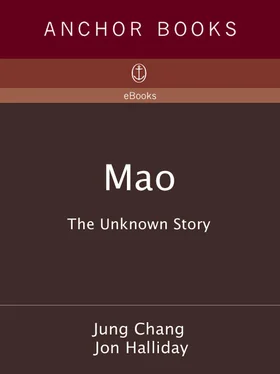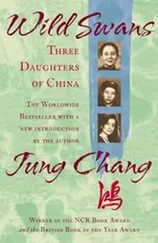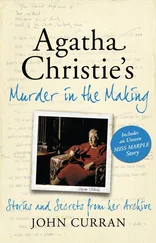In 1925, Chiang had sent Ching-kuo, then fifteen years old, to a school in Peking. This was a time when Chiang’s star was ascending in a Nationalist Party that was sponsored by Moscow. In no time, the Russians were on to Ching-kuo, and invited him to study in Russia. The young man was very keen. A few months after he arrived in Peking, Ching-kuo was taken to Moscow by a little-known but pivotal figure called Shao Li-tzu, who was a key Red mole inside the Nationalist Party.
Planting moles was one of the most priceless gifts that Moscow bequeathed to the CCP. Mostly these moles joined the Nationalists in the first half of the 1920s, when Sun Yat-sen, who was courting the Russians, opened his party to the Communists. Infiltration worked on several levels. As well as overt Communists working inside the Nationalist movement, as Mao did, there were also secret Communists, and then a third group, those who had staged fake defections from the CCP. When Chiang split from the Communists in 1927, a large number of these secret agents stayed as “sleepers,” to be activated at the appropriate time. For the next twenty years and more, they were not only able to give the Reds crucial intelligence, they were often in a position to have a substantial influence on policy, as many had meanwhile risen very high in the Nationalist system. Ultimately, the agents played a gigantic role in helping deliver China to Mao — probably a greater role in high-level politics than in any other country in the world. Many remain unexposed even today.
Shao Li-tzu was one of them. He was actually a founding member of the CCP, but on Moscow’s orders he stayed away from Party activities, and his identity was kept secret even from most Party leaders. When Chiang turned against the Communists in Shanghai in April 1927, Shao wrote the Russians a telegram that was instantly forwarded to Stalin, asking for instructions: “Shanghai disturbs me very much. I cannot be the weapon of counter-revolution. I ask for advice how to fight.”
For the next twenty-two years, Shao stayed with the Nationalists, occupying many key posts — until the Communist victory in 1949, when he went over to Mao. He died in Peking in 1967. Even under Communist rule, his true face was never revealed, and he is still presented today as an honest sympathizer, not a long-term sleeper.
It was undoubtedly on Moscow’s instructions that Shao had brought Chiang’s son to Russia in November 1925. When Ching-kuo completed his studies there, in 1927, he was not allowed to leave, and was forced to denounce his father publicly. Stalin was keeping him hostage while telling the world that he had volunteered to stay. Stalin liked to hold hostages. Peggy Dennis, the wife of the US Communist leader Eugene Dennis, described a visit from the Comintern éminence grise Dmitri Manuilsky as she and her husband were about to leave Russia to return to America in 1935: “The bombshell was dropped quietly … Almost casually, Manuilsky informed us that we could not take Tim [their son] back, ‘… We will send him at some other time, under other circumstances.’ ” The Russians never did.
The fact that Ching-kuo was a hostage was spelled out to his father in late 1931—by none other than his own sister-in-law, Mme Sun Yat-sen (née Soong Ching-ling), who was another Soviet agent. Speaking for Moscow, she proposed swapping Ching-kuo for two top Russian agents who had recently been arrested in Shanghai. Chiang turned the swap down. The arrest of the two agents was a public affair, and they had been openly tried and imprisoned. But Moscow’s offer unleashed a torrent of anguish in Chiang, who thought his son might now be “cruelly put to death by Soviet Russians.” On 3 December 1931 the Generalissimo wrote in his diary: “In the past few days, I have been yearning for my son even more. How can I face my parents when I die [if Ching-kuo is killed]?” On the 14th: “I have committed a great crime by being unfilial [by risking the death of his heir] …”
Chiang continued to be consumed by anxiety about what might happen to his son, and his anguish and bitterness almost certainly explain an event that happened thousands of kilometers away. At exactly this time, December 1931, Shao Li-tzu’s son was found shot dead in Rome. This son had been taken by Shao to Russia in 1925 as Ching-kuo’s traveling companion. But, unlike Ching-kuo, Shao junior was later allowed to return to China. The Italian press covered this death as a lovers’ tragedy, one paper running the story under the headline “The tragic end of a Chinese who had wounded his lover”—a woman reported as Czech. But Shao and his family were convinced that the murder of his son, which has been covered up by both Nationalist and Communist parties, was carried out by Nationalist agents, and this could only have been done with Chiang’s authorization, as personal vengeance: a son for a son.
By the time the Long March began, Chiang had devised a carefully crafted swap: the survival of the CCP for Ching-kuo. It was not an offer that could be spelled out. He executed his plan in subtle ways. His scheme was to keep the Reds temporarily confined, and then use the Japanese to break them. Chiang regarded war with Japan as inevitable, and was well aware that Russia wanted this war. Stalin’s most dreaded scenario was that Japan would conquer China, and then, with China’s resources and a porous 7,000-kilometer border, would attack the Soviet Union. Chiang reckoned that once the Sino-Japanese war started, Moscow would be bound to order its Chinese clients to get active against Japan. Until that day, Chiang would allow the Reds to survive, which he hoped would be a big enough quid pro quo to get his son back.
Chiang did not want the Reds to cling on in the rich heartland of China. His aim was to drive them into a more barren and sparsely populated corner, where he could box them in. The prison he had in mind was the Yellow Earth Plateau in northwest China, mainly the northern part of Shaanxi province. To make absolutely sure that the Reds would walk into his fold, Chiang allowed a Communist base to flourish there, while vigorously stamping out the others elsewhere in China.
The main person Chiang used to implement this scheme was none other than Shao Li-tzu, the man who had taken Chiang’s son to Russia. Shao was appointed governor of Shaanxi in April 1933. Though Chiang certainly knew Shao’s true colors, he never exposed him, and continued to use him as if he were a bona fide Nationalist. Chiang’s relationship with Shao, as with many other key moles, was an almost unbelievably complex web of intrigue, deceit, bluff and double-bluff that eventually was to spin out of his control and contribute to his downfall.
Chiang’s calculation was that only a mole could foster a Red pocket, as any authentic Nationalist would destroy it. And, indeed, it was only after Shao was appointed to the area that what had hitherto been a tiny Red guerrilla operation began to grow in Shaanxi (and the edge of Gansu immediately to the west). At the exact moment the Long March began, in mid-October 1934, Chiang came to Shaanxi province for a visit. While publicly calling for the Red “bandits” to be “wiped out,” he allowed the Red base to expand in an unprecedented manner; inside a few months, it had grown to cover 30,000 sq km, with a population of 900,000.
What Chiang had created was a corral into which he would herd all the different detachments of the Red Army as he drove them out of their various pockets in the heartland of China. His plan was to weaken them significantly along the way, but not kill them off entirely. Chiang later told an American emissary: “I drove the Communists from Jiangxi to … northern Shaanxi, where their number was reduced to a few thousands and they were left unpursued.”
The way he steered them was by communicating his own deployments by radio, which he knew would be intercepted. The Reds found that “enemy telegrams were constantly intercepted and decoded by us, and our army knew the intentions and movements of the enemy like the back of our hand.” But Chiang declined to change his codes. And the Reds went where there were no enemy troops, or very few.
Читать дальше










